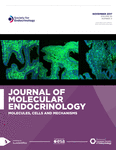Quantitative real-time RT-PCR – a perspective
- Institute of Cellular and Molecular Science, Barts and the London, Queen Mary’s School of Medicine and Dentistry, University of London, London, UK
- 1EMBL Heidelberg, Meyerhofstrasse 1, D-69117 Heidelberg, Germany
- 2Stratagene Europe, PO Box 12085, 1100 AB Amsterdam, The Netherlands
- 3Abteilung Physiologie, Zentralinstitut für Ernährungs und Lebensmittelforschung, Technische Universität München, Weihenstephaner Berg 3, D-85354 Freising-Weihenstephan, Germany
- (Requests for offprints should be addressed to S A Bustin, Centre for Academic Surgery, 4th Floor Alexander Wing, Royal London Hospital, London E1 1BB, UK; Email: s.a.bustin{at}qmul.ac.uk)
Abstract
The real-time reverse transcription polymerase chain reaction (RT-PCR) uses fluorescent reporter molecules to monitor the production of amplification products during each cycle of the PCR reaction. This combines the nucleic acid amplification and detection steps into one homogeneous assay and obviates the need for gel electrophoresis to detect amplification products. Use of appropriate chemistries and data analysis eliminates the need for Southern blotting or DNA sequencing for amplicon identification. Its simplicity, specificity and sensitivity, together with its potential for high throughput and the ongoing introduction of new chemistries, more reliable instrumentation and improved protocols, has made real-time RT-PCR the benchmark technology for the detection and/or comparison of RNA levels.
- Received 12 January 2005
- Accepted 21 January 2005
- © 2005 Society for Endocrinology











